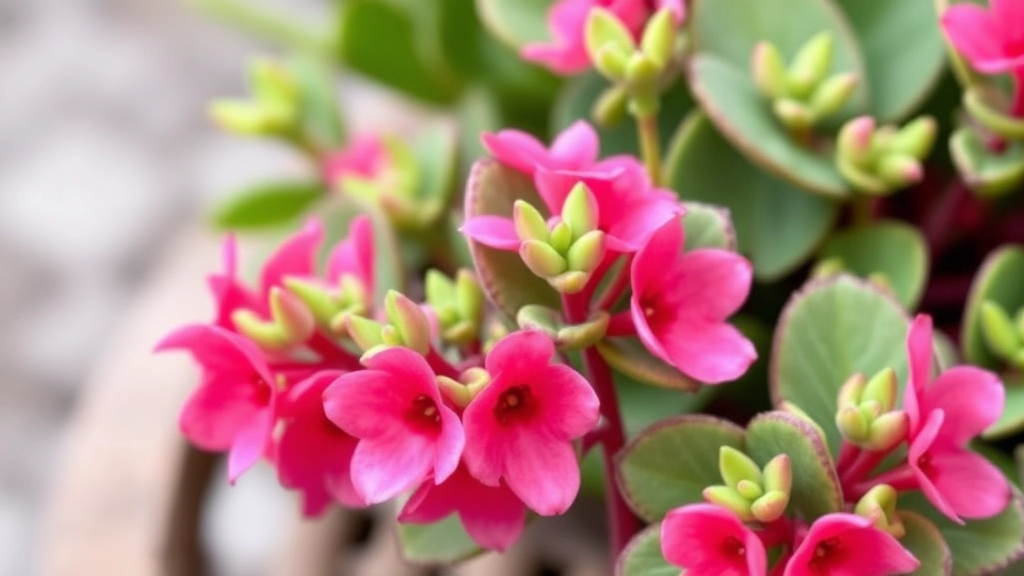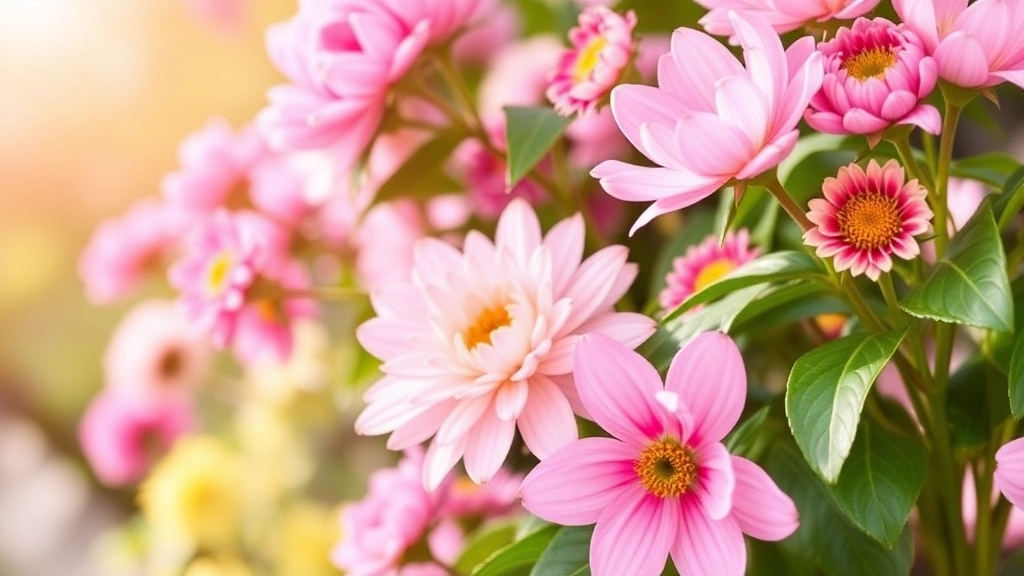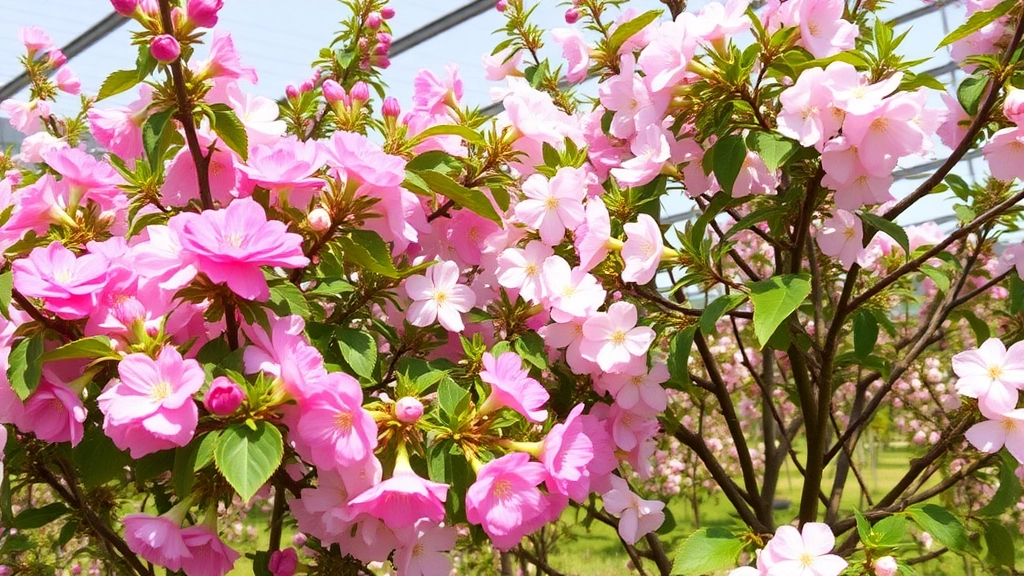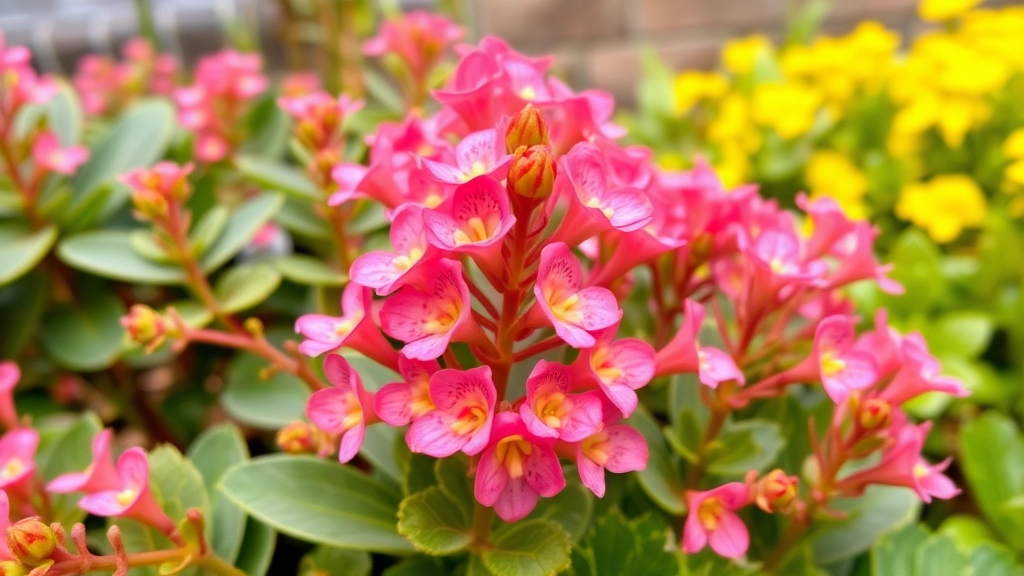Kalanchoe Flowering Season in India
Ever wondered when the Kalanchoe flowering season in India kicks off? Well, you’re in the right place. In this article, I’ll walk you through the best time to enjoy these vibrant blooms. Whether you’re a seasoned gardener or a newbie, understanding the flowering season can make all the difference in your gardening journey.
From the right climate conditions to care tips, I’ve got you covered. Let’s dive into the specifics and make sure your Kalanchoe plants flourish beautifully. Stay tuned for some practical advice and insights that will keep your garden looking stunning all year round.
Best Time for Kalanchoe Flowering in India
When considering the best time for Kalanchoe flowering in India, many gardeners often wonder about the optimal conditions for these vibrant plants.
Kalanchoe typically flourishes and produces its stunning blooms during the cooler months, primarily from October to March.
This flowering season aligns with the mild winter temperatures prevalent in many parts of India, which provide the ideal environment for Kalanchoe to thrive.
Key Factors Influencing Flowering Time:
- Temperature: Kalanchoe prefers temperatures between 15°C to 25°C.
- Day Length: These plants require shorter days to trigger flowering, making the winter months perfect.
- Watering: Reducing watering during the flowering season can also encourage blooms.
Many gardeners find that their Kalanchoe plants begin to show buds as the days shorten in late autumn.
As the flowering season approaches, it’s essential to monitor your plants closely, ensuring they receive adequate light without excessive heat.
Understanding these timings can significantly enhance your gardening experience and lead to a more vibrant display. For more tips on achieving vibrant blooms, check out our Florist Kalanchoe Plant Care Tips.
Additionally, if you’re looking to maintain healthy growth throughout the year, our Essential Kalanchoe Care Tips for Summer Success can provide valuable insights.
Climate Conditions Favorable for Kalanchoe

So, you’re keen on getting your Kalanchoe to bloom beautifully, right?
The climate plays a massive role in how well your plants thrive and flower.
Ideal Temperature Range
Kalanchoe loves warmth.
- Daytime: 20-25°C (68-77°F)
- Nighttime: 15-18°C (59-64°F)
If temperatures dip below 10°C (50°F), you might notice your plant sulking.
Humidity Levels
Kalanchoe prefers moderate humidity.
- Aim for around 40-50%.
- Too much humidity can lead to mold, while too little can cause stress.
Sunlight Needs
These beauties are sun worshippers!
- Direct Sunlight: 6 hours a day is ideal.
- If you can’t provide that, bright indirect light works too.
Rainfall Considerations
While Kalanchoe isn’t picky about water, it doesn’t like to be drenched.
- Well-draining soil is essential.
- During monsoon, ensure excess water drains away to prevent root rot.
When it comes to Kalanchoe flowering in India, one pressing question often arises: why does the blooming season vary across different regions?
The flowering period of Kalanchoe is influenced by local climate conditions, which can differ significantly from one area to another.
In the northern states, such as Punjab and Haryana, Kalanchoe typically blooms from late winter to early spring (February to March). The cooler temperatures and lower humidity levels during this time create an ideal environment for these plants to thrive.
Conversely, regions like Rajasthan and Gujarat experience a different blooming cycle. Here, Kalanchoe tends to flower from late spring to early summer (April to June), when temperatures rise but are still manageable for the plant.
In southern states like Tamil Nadu and Kerala, Kalanchoe can bloom almost year-round, thanks to the warm and humid climate. However, the peak flowering season generally falls between the monsoon months of June to September.
In the eastern regions, such as West Bengal and Odisha, Kalanchoe flowers predominantly in the late summer to early autumn (August to October). The monsoon rains help to invigorate the plants, leading to vibrant blooms.
For more information on how to make your Kalanchoe bloom all summer, check out our [expert tips](https://planthq.org/how-to-make-kalanchoe-bloom-all-summer-expert-tips/). Additionally, if you are dealing with issues like flowers losing color, you can find useful [causes and fixes](https://planthq.org/why-are-my-kalanchoe-flowers-losing-color-causes-fixes/) to help your plants thrive.
Tips for Encouraging Blooming

As we delve into the practical aspects of nurturing Kalanchoe, it’s essential to understand how to encourage these vibrant plants to bloom. Many gardeners often wonder why their Kalanchoe isn’t flowering as expected. Here are some effective strategies to promote blooming:
1. Light Exposure
- Bright Indirect Light: Kalanchoe thrives in bright, indirect sunlight. Positioning your plant near a window where it can receive ample light will stimulate flowering.
- Avoid Direct Sun: Too much direct sunlight can scorch the leaves, hindering the blooming process.
2. Watering Practices
- Moderate Watering: Water your Kalanchoe when the top inch of soil feels dry. Overwatering can lead to root rot, while underwatering can stress the plant.
- Drainage: Ensure pots have proper drainage to prevent water accumulation.
3. Temperature Control
- Ideal Temperature Range: Maintain a temperature between 15°C to 25°C. Sudden temperature changes can affect blooming.
- Avoid Cold Drafts: Keep your Kalanchoe away from cold drafts or extreme heat sources.
4. Fertilisation
- Use a Balanced Fertiliser: Applying a balanced fertiliser every 4-6 weeks during the growing season can enhance blooming.
- Dilution is Key: Always dilute the fertiliser to half the recommended strength to avoid nutrient burn.
5. Pruning and Deadheading
- Regular Pruning: Remove spent flowers and any dead leaves to encourage new growth and blooming.
- Shape Maintenance: Pruning helps maintain the shape of the plant, allowing for better light penetration.
6. Stress Induction
- Controlled Stress: Sometimes, inducing a bit of stress—like reducing water for a short period—can trigger blooming. However, this should be done cautiously.
7. Rest Period
- Resting Phase: Allowing your Kalanchoe to experience a rest period of about six weeks without fertiliser or water can encourage a burst of blooms once care resumes.
Common Varieties of Kalanchoe in India
As we explore the fascinating world of Kalanchoe, it’s essential to understand the various species that thrive in Indian gardens. Each variety boasts unique features and blooming characteristics, making them suitable for different gardening styles and preferences.
Popular Kalanchoe Varieties
- Kalanchoe blossfeldiana
- Known for its vibrant blooms, this variety is a favourite among gardeners.
- Flowers come in shades of red, pink, yellow, and white.
- Typically blooms during the cooler months, making it ideal for Indian winters.
- Kalanchoe tomentosa (Panda Plant)
- Recognised for its fuzzy, grey-green leaves adorned with brown edges.
- Produces small, tubular flowers that attract pollinators.
- Thrives in warmer climates, adding a unique texture to gardens.
- Kalanchoe luciae (Flapjack Plant)
- Features large, paddle-shaped leaves that turn a stunning red in bright sunlight.
- Blooms in clusters of small yellow flowers.
- Perfect for rock gardens or as a striking focal point.
- Kalanchoe daigremontiana (Mother of Thousands)
- Known for its ability to produce numerous offsets from its leaves.
- Produces small, tubular flowers that can be quite showy.
- A resilient choice for low-maintenance gardens.
- Kalanchoe beharensis (Elephant Bush)
- Characterised by its thick, upright stems and large leaves.
- Produces clusters of orange flowers.
- Ideal for creating a bold statement in any garden.
These varieties are not only visually appealing but also relatively easy to care for. Their adaptability to different climates and conditions makes them suitable for a variety of gardening situations. For more specific care tips, you can refer to the Kalanchoe Tomentosa Care Guide or explore Kalanchoe Pinnata Air Plant Care for in-depth information.
Care and Maintenance During Flowering Season

So, you’ve got your Kalanchoe blooming beautifully, and now you’re wondering how to keep it thriving, right? No worries, I’ve got your back!
Watering Wisely
- Watering Frequency: Keep the soil slightly moist but not soggy. Water when the top inch feels dry.
- Avoid Overwatering: This is crucial during the flowering season. Too much water can lead to root rot.
Light Requirements
- Bright, Indirect Light: Kalanchoe loves light but can’t handle harsh, direct sunlight. A spot near a window with filtered light is perfect.
- Rotate the Plant: Every week, give it a gentle turn. This helps all sides get equal light and encourages even growth.
Fertilizing Tips
- Use a Balanced Fertilizer: A diluted liquid fertilizer every 4-6 weeks can work wonders.
- Stop Fertilizing After Blooming: Once the flowers fade, ease off on the feed. Your plant needs a break!
Pruning for Health
- Deadheading Flowers: Snip off spent blooms to encourage new growth. It’s like giving your plant a little nudge.
- Trim for Shape: If it gets leggy, don’t hesitate to prune back some stems to promote bushier growth.
Pest Control
- Keep an Eye Out: Watch for common pests like aphids or mealybugs. If you spot them, a gentle spray of water or insecticidal soap can help.
- Regular Checks: Inspect your plant weekly. Catching pests early makes all the difference.
Potential Issues and Solutions During Blooming
As we delve deeper into the flowering season of Kalanchoe, it’s essential to address some common challenges that may arise. Understanding these issues will help ensure your plants thrive and produce vibrant blooms.
Common Issues During Blooming
- Poor Flowering: One of the most common concerns is when Kalanchoe fails to bloom. This can be frustrating, especially after investing time and care.
- Pest Infestation: Pests such as aphids and mealybugs can wreak havoc on your plants, leading to stunted growth and reduced flowering.
- Leaf Yellowing: Yellowing leaves can signal various problems, from overwatering to nutrient deficiencies.
- Fungal Diseases: High humidity can lead to fungal issues, affecting both the leaves and the flowers.
Solutions to Common Issues
- For Poor Flowering:
- Ensure your Kalanchoe receives adequate sunlight, ideally around 6 hours of indirect light daily. For more details, you can check out our best lighting tips for Kalanchoe.
- Adjust watering habits; allow the soil to dry out between waterings.
- Fertilise with a balanced, water-soluble fertiliser every few weeks during the growing season.
- For Pest Infestation:
- Regularly inspect your plants for signs of pests.
- Use insecticidal soap or neem oil as a natural remedy to control infestations.
- Keep the surrounding area clean to deter pests. For a comprehensive guide, visit our page on Kalanchoe leaf problems and solutions.
- For Leaf Yellowing:
- Assess your watering routine; underwatering or overwatering can both cause yellowing.
- Ensure the plant is in well-draining soil and consider adding a balanced fertiliser to address nutrient deficiencies.
- For Fungal Diseases:
- Maintain proper air circulation around your plants.
- Water early in the day to allow foliage to dry before nightfall.
- Apply a fungicide if necessary, following the instructions carefully.
Benefits of Growing Kalanchoe in Indian Gardens
So, why should you consider adding Kalanchoe to your garden?
Well, these vibrant little plants pack a punch when it comes to benefits.
1. Stunning Aesthetics
Kalanchoe flowers come in a variety of coloursâthink bright reds, yellows, and pinks.
They can instantly liven up any space, making your garden a visual delight.
Imagine hosting a gathering with friends, and your Kalanchoe blooms steal the show!
2. Low Maintenance
Got a busy lifestyle? No worries!
Kalanchoe is incredibly low-maintenance.
Just a little sunlight and occasional watering, and you’re good to go.
Perfect for those of us who might not have a green thumb!
3. Air Purification
Did you know Kalanchoe can help improve air quality?
These plants absorb toxins and release oxygen, making your home feel fresher.
It’s like having a natural air purifier right in your living room!
4. Medicinal Properties
Some varieties of Kalanchoe are known for their medicinal uses.
From soothing skin irritations to promoting healing, these plants can be quite handy.
Always a plus when your garden doubles as a mini herbal pharmacy!
5. Versatile Growing Options
Whether you have a sprawling garden or just a balcony, Kalanchoe fits right in.
They thrive in pots, hanging baskets, or directly in the ground.
This versatility makes them a great choice for any space.
6. Attracts Pollinators
Kalanchoe flowers can draw in bees and butterflies, adding life to your garden.
It’s a win-win: beautiful blooms and helpful pollinators working together!
You’ll love watching them flutter around.
7. Cost-Effective
Kalanchoe plants are generally affordable and can be propagated easily.
You can grow new plants from cuttings, saving you money while expanding your garden.
For detailed steps, check out our step-by-step guide to grow Kalanchoe from leaf cuttings. Who doesn’t love a budget-friendly option?
Additionally, if you’re interested in the medicinal uses of Kalanchoe, you might want to explore our article on Kalanchoe’s medicinal uses and health benefits.
FAQs about Kalanchoe Flowering Season in India
What is the ideal temperature range for Kalanchoe to thrive?
Kalanchoe prefers a daytime temperature range of 20-25°C (68-77°F) and a nighttime range of 15-18°C (59-64°F). Temperatures below 10°C (50°F) can stress the plant.
How much sunlight does Kalanchoe need?
Kalanchoe thrives in bright, indirect sunlight. Ideally, it should receive 6 hours of direct sunlight per day, but bright indirect light can also work.
What are the humidity requirements for Kalanchoe?
Kalanchoe prefers moderate humidity levels, around 40-50%. Too much humidity can lead to mold, while too little can cause stress to the plant.
How should I water my Kalanchoe during the flowering season?
Water your Kalanchoe when the top inch of soil feels dry. It’s important to avoid overwatering to prevent root rot. During the flowering season, keep the soil slightly moist but not soggy.
What type of soil is best for Kalanchoe?
Well-draining soil is essential for Kalanchoe. During the monsoon season, ensure excess water can drain away to prevent root rot.
How can I encourage my Kalanchoe to bloom?
To encourage blooming, provide bright indirect light, moderate watering, maintain an ideal temperature range of 15-25°C, and use a balanced fertilizer every 4-6 weeks during the growing season. Regular pruning and deadheading also promote new growth and blooming.
What should I do if my Kalanchoe isn’t blooming?
If your Kalanchoe isn’t blooming, check if it is receiving enough light, avoid overwatering, and maintain consistent temperatures. Sometimes, inducing a bit of stress by reducing water for a short period can trigger blooming.
How do I care for Kalanchoe during the flowering season?
During the flowering season, keep the soil slightly moist, provide bright, indirect light, and fertilize with a diluted liquid fertilizer every 4-6 weeks. Rotate the plant weekly for even growth, and prune spent blooms to encourage new growth.
What pests should I watch out for on my Kalanchoe?
Common pests to watch out for include aphids and mealybugs. Regularly inspect your plant and use a gentle spray of water or insecticidal soap if you spot any pests.
Should I fertilize my Kalanchoe after it has finished blooming?
Once the flowers fade, it’s best to stop fertilizing and allow the plant to rest. Resume fertilization during the next growing season to encourage new blooms.
References
-
Kalanchoe Plant Care: Growing Kalanchoe As A Houseplant
-
How to Grow Kalanchoe Plants Indoors
-
Kalanchoe: How to Grow and Care for Kalanchoe Plants
